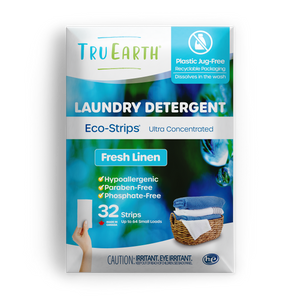Discoloration in clothes can be a frustrating problem that diminishes the appearance of our favorite garments. Discoloration can make clothes look dull and worn out, whether it's yellowing, fading, or color bleeding. However, there's good news!
With the right knowledge and techniques, you can effectively remove discoloration and restore the original color of your clothes. We've covered everything from pre-treating stains to choosing the right laundry products and adjusting your laundering techniques.

Understanding Discoloration in Clothes
Discoloration in clothes can be caused by various factors, such as stains, fading, or chemical reactions. It can be frustrating to see your favorite garments lose their vibrancy and appeal due to discoloration. Understanding the causes and types of discoloration is crucial to effectively removing it and restoring your clothes' original color.
Common Causes of Discoloration
Discoloration in clothes can occur due to a variety of reasons. Understanding the common causes of discoloration is essential in effectively treating and preventing it.
Here are some of the most common culprits behind discoloration:
- Stains and spills: Accidental spills of food, beverages, oils, or other substances can leave behind stubborn stains contributing to discoloration. If not treated promptly and properly, these stains can set into the fabric and become difficult to remove.
- Sunlight and UV exposure: Prolonged exposure to sunlight and ultraviolet (UV) rays can cause fabrics to fade and lose their original color. This is particularly noticeable in brightly colored or dark garments. The UV rays break down the dyes and pigments in the fabric, resulting in a washed-out or bleached appearance.
- Improper laundering: Incorrect laundering techniques, such as using excessive heat or harsh detergents, can cause discoloration. High temperatures can cause colors to bleed or fade, while harsh chemicals can strip away the fabric's natural color or leave residue.
- Chemical reactions: Certain substances, such as chlorine bleach or acidic cleaners, can react with the dyes in fabrics and cause discoloration. Using appropriate cleaning agents and avoiding mixing incompatible products is essential to prevent chemical reactions that lead to color changes.
- Inadequate storage: Improper clothing storage, such as exposing them to damp environments or leaving them in direct contact with other garments, can result in mold or mildew growth. These fungal growths can cause unsightly stains and discoloration on the affected fabrics.
By being aware of these common causes of discoloration, you can take proactive steps to prevent them and preserve the color integrity of your clothes. In the following sections, we will delve into effective tips and tricks to address these discoloration issues and restore the vibrancy of your garments.

Tips for Removing Discoloration from Clothes
By following these guidelines, you can increase your chances of successfully restoring the original color of your garments.
Choosing the Right Laundry Products
Selecting the right laundry products is crucial for effectively removing discoloration from clothes. When choosing products, it's important to carefully read the labels and instructions. Look for products with biodegradable ingredients, minimal packaging waste, and certifications from reputable eco-labels.
Supporting environmentally conscious brands can align with your commitment to sustainability. Tru Earth's laundry detergent strips offer several benefits and advantages for cleaning your clothes. These innovative strips are designed with sustainability in mind, providing a convenient and eco-friendly alternative to traditional liquid or powder detergents.

Adjusting Laundering Techniques
In addition to using the right products, adjusting your laundering techniques can help prevent and remove discoloration. Pay attention to the recommended water temperature on your garment's care label.
Hot water is generally more effective for stain removal but can also cause color bleeding or fading. When in doubt, opt for cold or lukewarm water to protect the color integrity of your clothes. Sorting your laundry by color is another important technique to prevent color transfer and minimize the risk of discoloration.
Wash dark, vibrant, and heavily dyed garments separately from lighter colors or whites. This reduces the chance of dyes bleeding onto other fabrics and causing discoloration. Additionally, using gentle cycles and avoiding excessive heat during drying can help preserve the vibrancy of your clothes. High heat can cause colors to fade or become dull.
Seeking Professional Help
For stubborn or complex discoloration issues, seeking professional assistance can be viable. In some situations, professional dry cleaning or garment restoration services may be necessary to remove discoloration effectively.
Finding reputable professionals in your area who specialize in treating and restoring garments is important. Look for recommendations from trusted sources or online reviews.
Restoring Color and Revitalizing Your Wardrobe; It’s Easy!
In conclusion, discoloration in clothes can be distressing, but with the right knowledge and techniques, you can effectively restore color and revitalize your wardrobe. By understanding the causes and types of discoloration, following the recommended tips, and adopting preventive measures, you can extend the lifespan of your clothes and enjoy them for years to come.
Remember, each garment is unique, and some discoloration issues may require experimentation or professional assistance. With patience and care, you can tackle discoloration and preserve the vibrant beauty of your clothes.


